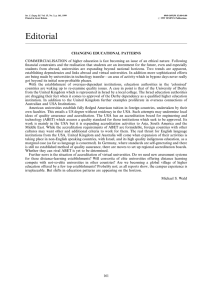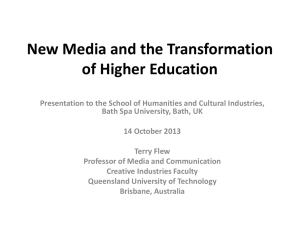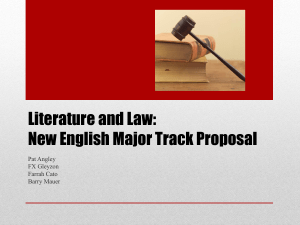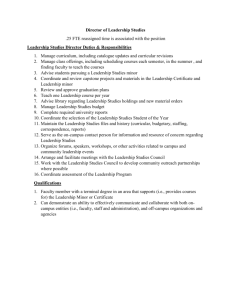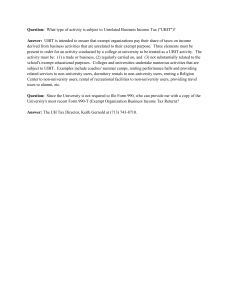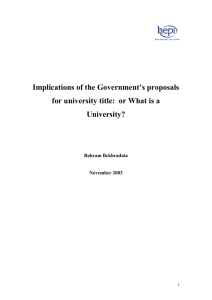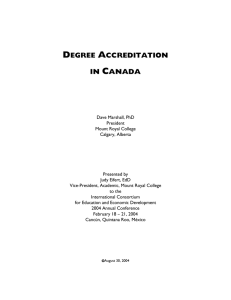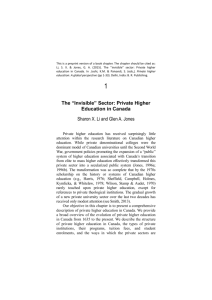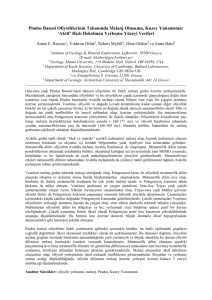Context for the National Data: USA
advertisement
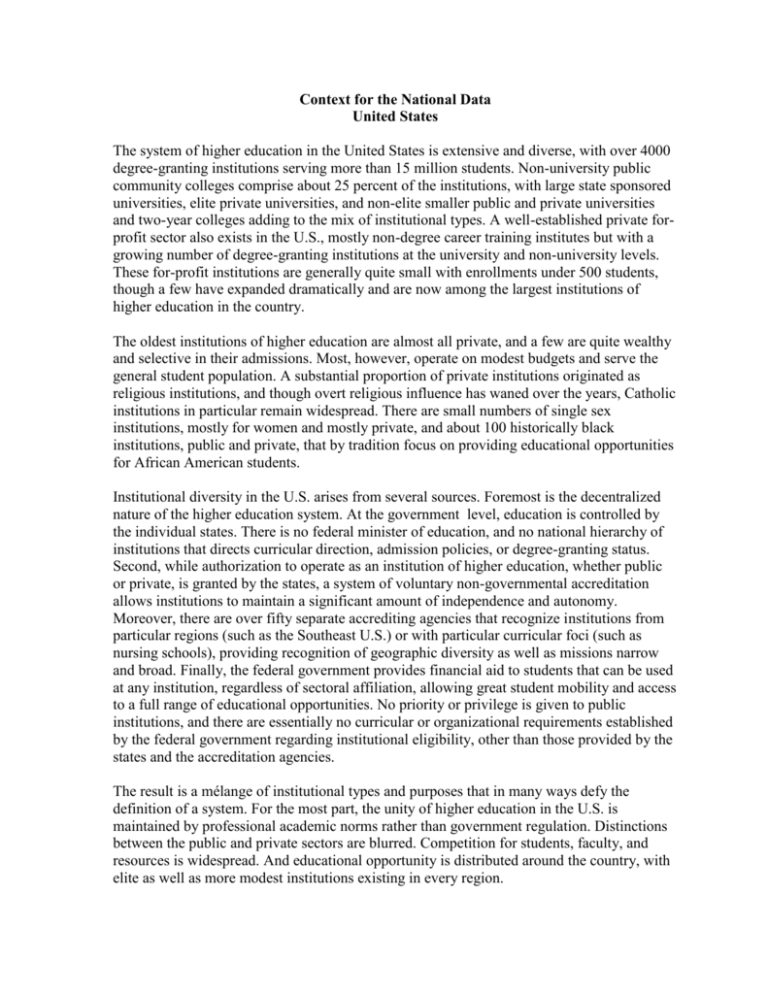
Context for the National Data United States The system of higher education in the United States is extensive and diverse, with over 4000 degree-granting institutions serving more than 15 million students. Non-university public community colleges comprise about 25 percent of the institutions, with large state sponsored universities, elite private universities, and non-elite smaller public and private universities and two-year colleges adding to the mix of institutional types. A well-established private forprofit sector also exists in the U.S., mostly non-degree career training institutes but with a growing number of degree-granting institutions at the university and non-university levels. These for-profit institutions are generally quite small with enrollments under 500 students, though a few have expanded dramatically and are now among the largest institutions of higher education in the country. The oldest institutions of higher education are almost all private, and a few are quite wealthy and selective in their admissions. Most, however, operate on modest budgets and serve the general student population. A substantial proportion of private institutions originated as religious institutions, and though overt religious influence has waned over the years, Catholic institutions in particular remain widespread. There are small numbers of single sex institutions, mostly for women and mostly private, and about 100 historically black institutions, public and private, that by tradition focus on providing educational opportunities for African American students. Institutional diversity in the U.S. arises from several sources. Foremost is the decentralized nature of the higher education system. At the government level, education is controlled by the individual states. There is no federal minister of education, and no national hierarchy of institutions that directs curricular direction, admission policies, or degree-granting status. Second, while authorization to operate as an institution of higher education, whether public or private, is granted by the states, a system of voluntary non-governmental accreditation allows institutions to maintain a significant amount of independence and autonomy. Moreover, there are over fifty separate accrediting agencies that recognize institutions from particular regions (such as the Southeast U.S.) or with particular curricular foci (such as nursing schools), providing recognition of geographic diversity as well as missions narrow and broad. Finally, the federal government provides financial aid to students that can be used at any institution, regardless of sectoral affiliation, allowing great student mobility and access to a full range of educational opportunities. No priority or privilege is given to public institutions, and there are essentially no curricular or organizational requirements established by the federal government regarding institutional eligibility, other than those provided by the states and the accreditation agencies. The result is a mélange of institutional types and purposes that in many ways defy the definition of a system. For the most part, the unity of higher education in the U.S. is maintained by professional academic norms rather than government regulation. Distinctions between the public and private sectors are blurred. Competition for students, faculty, and resources is widespread. And educational opportunity is distributed around the country, with elite as well as more modest institutions existing in every region.
